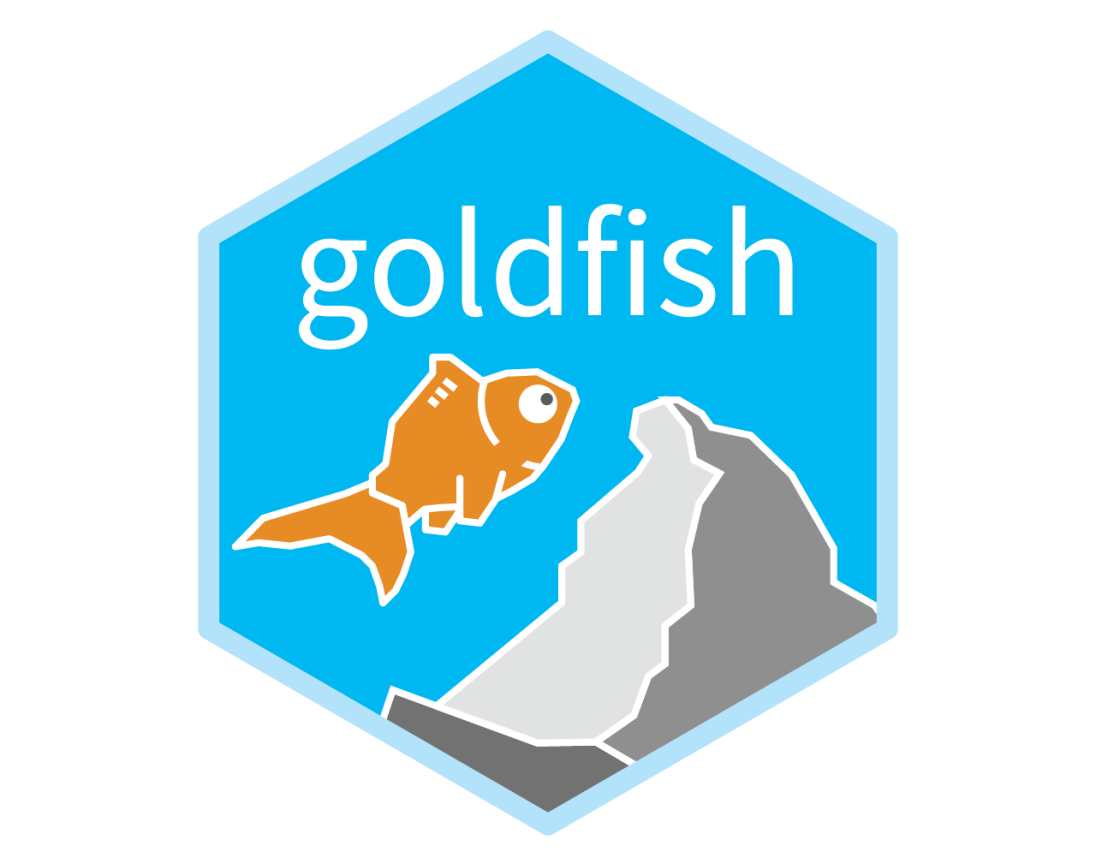The Goldfish package in R

The goldfish [1] package offers a collection of tools designed for applying statistical models to dynamic network data. It primarily focuses on models for relational event data, namely, sequences of interactions between actors or entities within a network, enriched by fine-grained time-stamp information. Relational event data emerge in various domains, such as automatically collected data about interactions in communication and social media research, social science studies using social sensors, and archival network studies that provide in-depth details regarding the timing or sequence of relational actions between nodes.
Models Available
- Dynamic Network Actor Models (DyNAM): Investigate relational event models as an actor-oriented decision process.
- rate: Actors compete for creating the next relational event (Hollway 2020)
- choice: The active actor chooses the receiver of the event from among the same (Stadtfeld and Block 2017) or a different set of nodes (Haunss and Hollway 2023)
- choice_coordination: The creation of coordination ties as a two-sided process (Stadtfeld, Hollway, and Block 2017a)
- Dynamic Network Actor Models for interactions (DyNAMi): Investigate dynamics of conversation groups and interpersonal interaction in different social contexts from an actor-oriented perspective (Hoffman et al. 2020)
- rate: Actors compete for joining or leaving groups
- choice: The active actor chooses the group to join
- Relational Event Models (REM): Investigate relational event models as a tie-oriented process (Butts 2008), taking into account right-censoring (Stadtfeld, Hollway, and Block 2017b).
Vignettes
For detailed documentation on each model, including usage examples, users are encouraged to consult the package’s vignettes and help files:
- external page Getting Started with goldfish (DyNAM and REM)
- external page Coordination ties (DyNAM-choice coordination)
- external page Face to face interactions (DyNAMi)
- external page Catalog of available effects
Installation
You can install goldfish directly from external page CRAN:
install.packages("goldfish")
To install the development version from GitHub, use the external page remotes package:
- For latest stable version:
remotes::install_github("stocnet/goldfish", build_vignettes = TRUE)
- For latest development version:
remotes::install_github("stocnet/goldfish@develop", build_vignettes = TRUE)
Or by downloading and installing the latest binary releases for all major OSes – Windows, Mac, and Linux – from external page here.
About
This project is a joint collaboration between the Social Networks Lab at ETH Zürich and the Geneva Graduate Institute, and incorporates and supports several sub-projects.
[1] The name Goldfish refers to the (incorrect) assertion that goldfish—like Markov processes—are memoryless.
References
Butts, Carter. 2008. “A Relational Event Framework for Social Action.” *Sociological Methodology* 38 (1): 155–200.
Haunss, Sebastian, and James Hollway. 2023. “Multimodal Mechanisms of Political Discourse Dynamics and the Case of Germany’s Nuclear Energy Phase-Out.” *Network Science* 11 (2): 205–23. .
Hoffman, Marion, Per Block, Timon Elmer, and Christoph Stadtfeld. 2020. “A Model for the Dynamics of Face-to-Face Interactions in Social Groups.” *Network Science* 8 (S1): S4–25. .
Hollway, James. 2020. “Network Embeddedness and the Rate of Water Cooperation and Conflict.” In *Networks in Water Governance*, edited by Manuel Fischer and Karin Ingold, 87–113. Cham: Palgrave MacMillan. .
Stadtfeld, Christoph, and Per Block. 2017. “Interactions, Actors, and Time: Dynamic Network Actor Models for Relational Events.” *Sociological Science* 4 (14): 318–52. .
Stadtfeld, Christoph, James Hollway, and Per Block. 2017a. “Dynamic Network Actor Models: Investigating Coordination Ties Through Time.” *Sociological Methodology* 47 (1): 1–40. .
———. 2017b. “Rejoinder: DyNAMs and the Grounds for Actor-oriented Network Event Models.” *Sociological Methodology* 47 (1): 56–67.